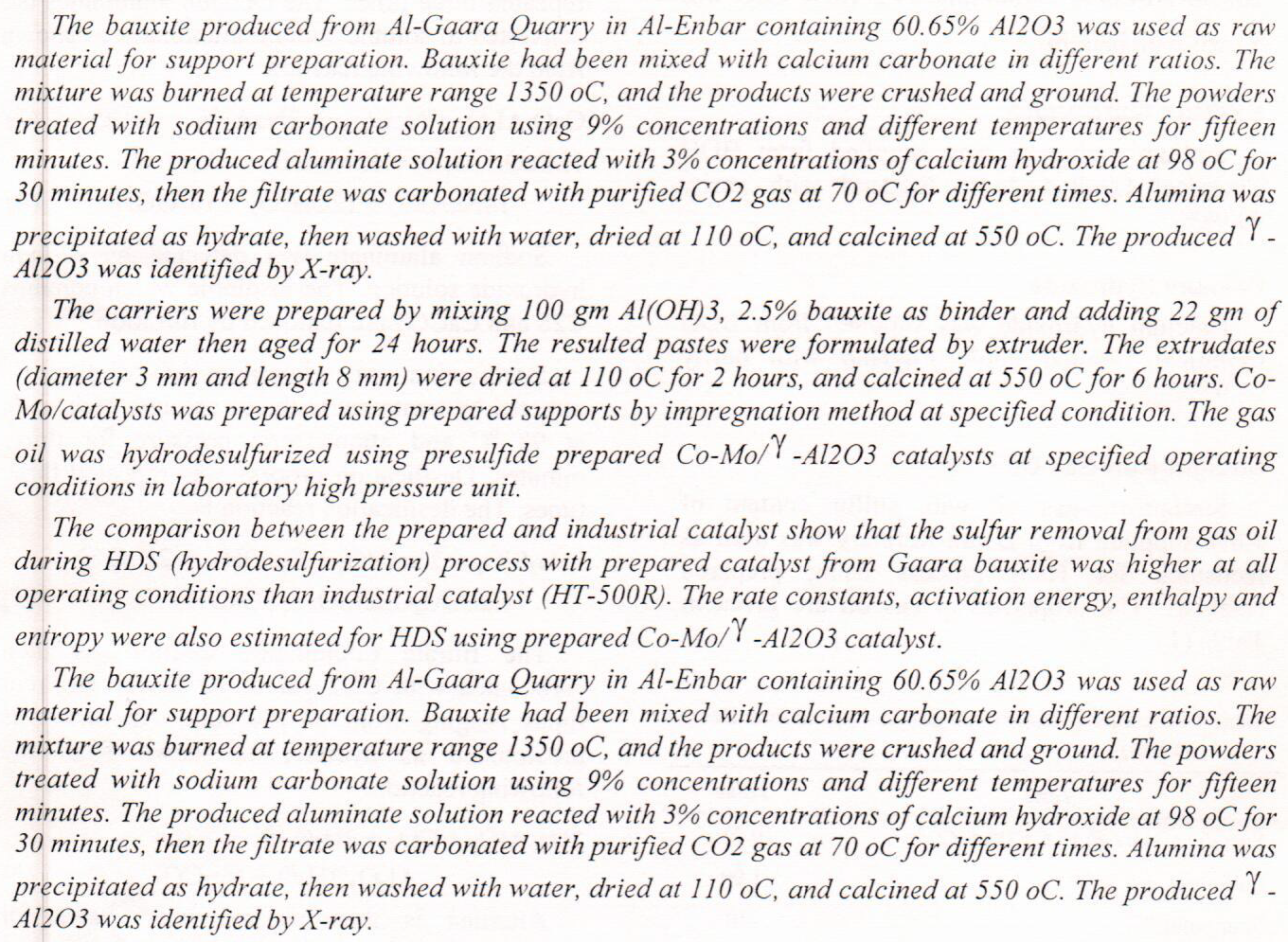
 (6)
(6)
 (4)
(4)
 (40)
(40)
 (38)
(38)
 (2)
(2)
 (9)
(9)
 (7)
(7)
In the present work studies were carried out to extract a cationic dye (Methylene Blue MB) from an aqueous solution using emulsion liquid membrane process (ELM). The organic phase (membrane phase) consists of Span 80 as emulsifier, sulfuric acid solution as stripping agent and hexane as diluent.
In this study, important factors influencing the extraction of methylene blue dye were studied. These factors include H2SO4 concentration in the stripping phase, agitation speed in the dye permeation stage, Initial dye concentration and diluent type.
More than (98%) of Methylene blue dye was extracted at the following conditions: H2SO4 concentration (1.25) M, agitation
... Show More (17)
(17)
The problem of research is to identify the uses of Iraqi women for Facebook and the motives of these uses and the innovations that have been achieved from them, in view of the increasing role-played by social networking sites in the lives of individuals in general and women in particular.The research seeks to identify the following: Identify the extent to which Iraqi women use Facebook and the usage motives and innovations achieved by the interviewees When they using Facebook. This study belongs to the descriptive studies that are interested in monitoring the characteristics of a particular phenomenon to identify its characteristics and characteristics.This study adopted the survey methodology to test the hypotheses of the study and how
... Show MoreThis research includes a study of the ability of Iraqi porcelanite rocks powder to remove the basic Safranine dye from its aqueous process by adsorption. The experiments were carried out at 298Kelvin in order to determine the effect of the starting concentration for Safranin dye, mixing time, pH, and the effect of ionic Strength. The good conditions were perfect for safranine dye adsorption was performed when0.0200g from that adsorbed particles and the removal max percentage was found be 96.86% at 9 mg/L , 20 minutes adsorption time and at PH=8 and in 298 K. The isothermal equilibrum stoichiometric adsorption confirmed, the process data were examined by Langmuir, Freundlich and Temkin adsorption equations at different temperatures
... Show More (4)
(4)
 (1)
(1)
An optoelectronic flow-through detector for active ingredients determination in pharmaceutical formulations is explained. Two consecutive compact photodetector’s devices operating according to light-emitting diodes-solar cells concept where the LEDs acting as a light source and solar cells for measuring the attenuated light of the incident light at 180˚ have been developed. The turbidimetric detector, fabricated of ten light-emitting diodes and five solar cells only, integrated with a glass flow cell has been easily adapted in flow injection analysis manifold system. For active ingredients determination, the developed detector was successfully utilized for the development and validation of an analytical method for warfarin determination
... Show More (20)
(20)
 (12)
(12)
The interest of application of liquid membrane (pertraction) processes for recovery of medicinal compounds from dilute ammoniacal leach solutions is demonstrated. Selectivity of the liquid membrane ensures a preferential transport of the desired solute from the native extract into the strip solution, vinblastine was successfully extracted from basic media (pH 9.2) and stripped by acidic media of sulfuric acid (pH= 1.3) applying continuous pertraction in a rotating discs contactor and using n-decane as liquid membrane. Transport of vinblastine in three-liquid-phase system was studied and performed by means of a kinetic model involving two consecutive irreversible first-order reactions. The kinetic parameters (apparent rate constants of th
... Show MoreActive Learning And Creative Thinking
